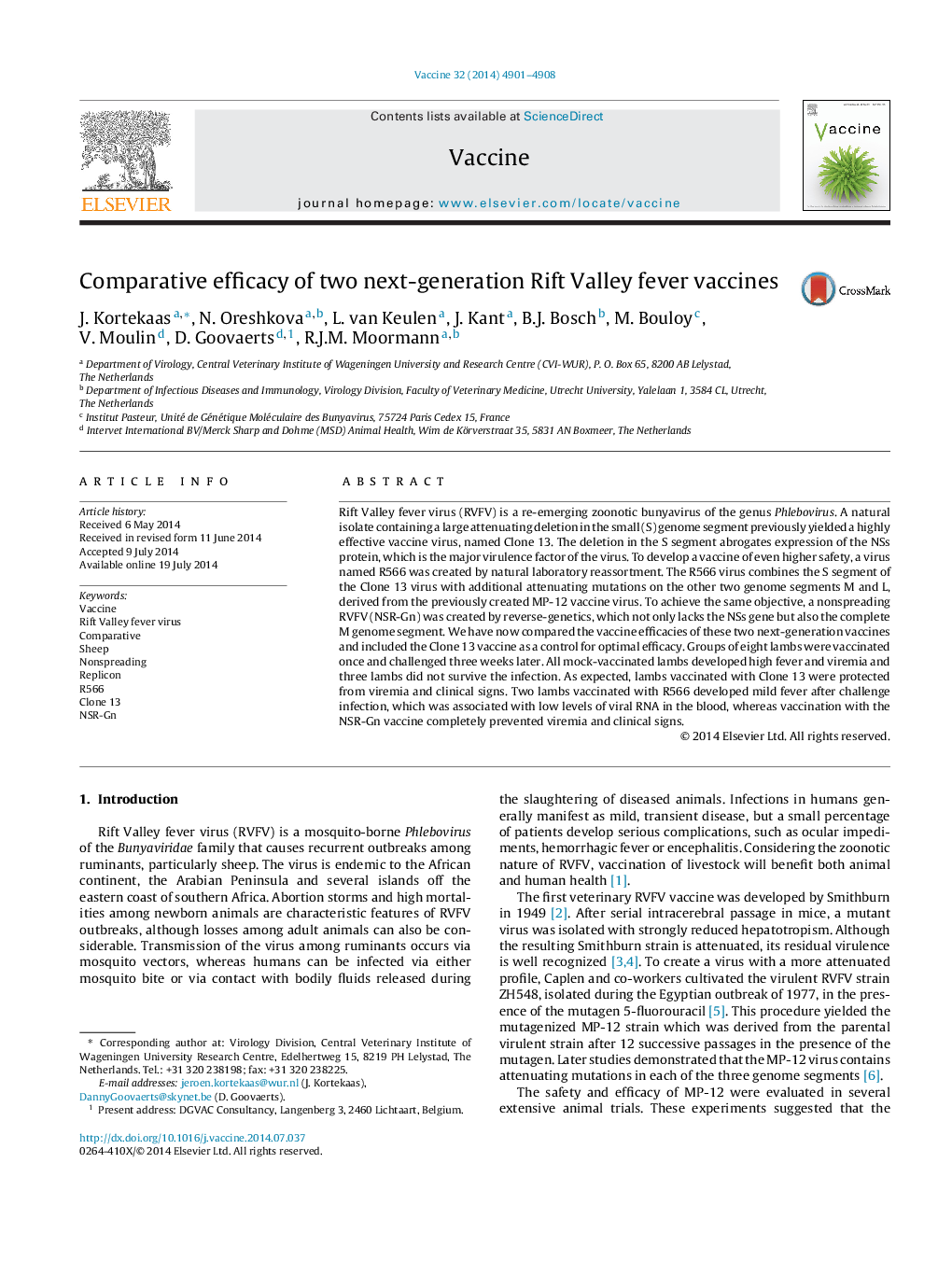| کد مقاله | کد نشریه | سال انتشار | مقاله انگلیسی | نسخه تمام متن |
|---|---|---|---|---|
| 10964339 | 1102711 | 2014 | 8 صفحه PDF | دانلود رایگان |
عنوان انگلیسی مقاله ISI
Comparative efficacy of two next-generation Rift Valley fever vaccines
ترجمه فارسی عنوان
مقایسه اثربخشی دو نسل جدید واکسنهای تبخیر دره ریفت
دانلود مقاله + سفارش ترجمه
دانلود مقاله ISI انگلیسی
رایگان برای ایرانیان
کلمات کلیدی
موضوعات مرتبط
علوم زیستی و بیوفناوری
ایمنی شناسی و میکروب شناسی
ایمونولوژی
چکیده انگلیسی
Rift Valley fever virus (RVFV) is a re-emerging zoonotic bunyavirus of the genus Phlebovirus. A natural isolate containing a large attenuating deletion in the small (S) genome segment previously yielded a highly effective vaccine virus, named Clone 13. The deletion in the S segment abrogates expression of the NSs protein, which is the major virulence factor of the virus. To develop a vaccine of even higher safety, a virus named R566 was created by natural laboratory reassortment. The R566 virus combines the S segment of the Clone 13 virus with additional attenuating mutations on the other two genome segments M and L, derived from the previously created MP-12 vaccine virus. To achieve the same objective, a nonspreading RVFV (NSR-Gn) was created by reverse-genetics, which not only lacks the NSs gene but also the complete M genome segment. We have now compared the vaccine efficacies of these two next-generation vaccines and included the Clone 13 vaccine as a control for optimal efficacy. Groups of eight lambs were vaccinated once and challenged three weeks later. All mock-vaccinated lambs developed high fever and viremia and three lambs did not survive the infection. As expected, lambs vaccinated with Clone 13 were protected from viremia and clinical signs. Two lambs vaccinated with R566 developed mild fever after challenge infection, which was associated with low levels of viral RNA in the blood, whereas vaccination with the NSR-Gn vaccine completely prevented viremia and clinical signs.
ناشر
Database: Elsevier - ScienceDirect (ساینس دایرکت)
Journal: Vaccine - Volume 32, Issue 39, 3 September 2014, Pages 4901-4908
Journal: Vaccine - Volume 32, Issue 39, 3 September 2014, Pages 4901-4908
نویسندگان
J. Kortekaas, N. Oreshkova, L. van Keulen, J. Kant, B.J. Bosch, M. Bouloy, V. Moulin, D. Goovaerts, R.J.M. Moormann,
